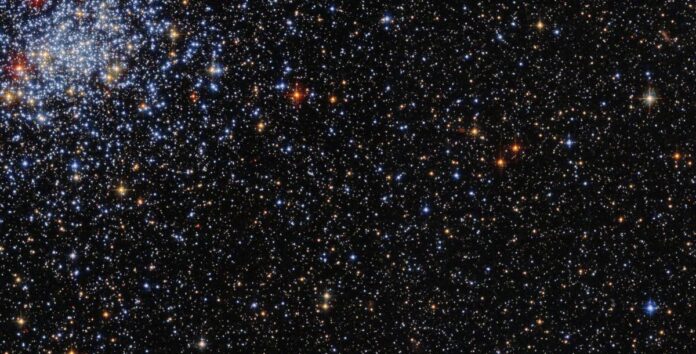The Hubble Space Telescope affords astronomers great looks at stars within the Milky Way, but it’s sensitive enough to also study objects outside our home galaxy.
And Hubble‘s views of distant places allow astronomers to ask a variety of interesting questions, such as, Why are so many stars in NGC 2031 shining in blue?
Stars can come in an array of shapes, sizes, ages and colors. But in the case of NGC 2031, the context doesn’t quite match the colors. NGC 2031 is an object known as a globular cluster, which is known to have older stars. However, blue stars usually shine brightly and die young.
Related: The best Hubble Space Telescope photos of all time
In an image description (opens in new tab) that accompanies a glittering Hubble shot of NGC 2031, NASA officials offer information about what astronomers think so far. One possible explanation they provide is that other stars outside the globular cluster are distorting their appearance.
NGC 2031 is located outside the Milky Way, in a much smaller satellite galaxy called the Large Magellanic Cloud. The “cloud” part of the name alludes to the object’s smudge-like appearance in the southern sky.
According to NASA, the globular cluster is located within a dense part of the Large Magellanic Cloud. “Its location in this crowded area results in ‘stellar contamination,’ a phenomenon where the atmospheres and surface features of nearby stars affect the measurements of objects under study,” according to the space agency.
Another possibility is that older stars are combining to form new objects, known as “blue stragglers.” This could happen because stars of a globular cluster are huddled very close to one another, bound to each other by their mutual gravity.
NGC 2031 also houses another stellar oddity. According to NASA, the globular cluster is home to about 14 known Cepheid variable stars. Thanks to their periodic dimming and brightening, astronomers can use Cepheids as distance beacons. Using measurements from Cepheid variable stars, scientists estimate the distance of NGC 2031 to be about 150,000 light-years from Earth.
And then, the visual beauty of the blue stars in this scene is a bonus treat on top of all the science.
Follow Doris Elin Urrutia on Twitter @salazar_elin (opens in new tab). Follow us on Twitter @Spacedotcom (opens in new tab) and on Facebook (opens in new tab).

